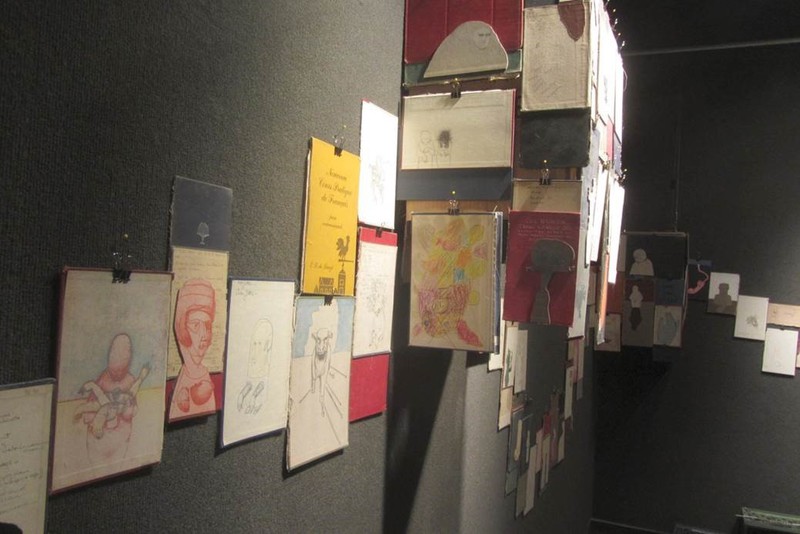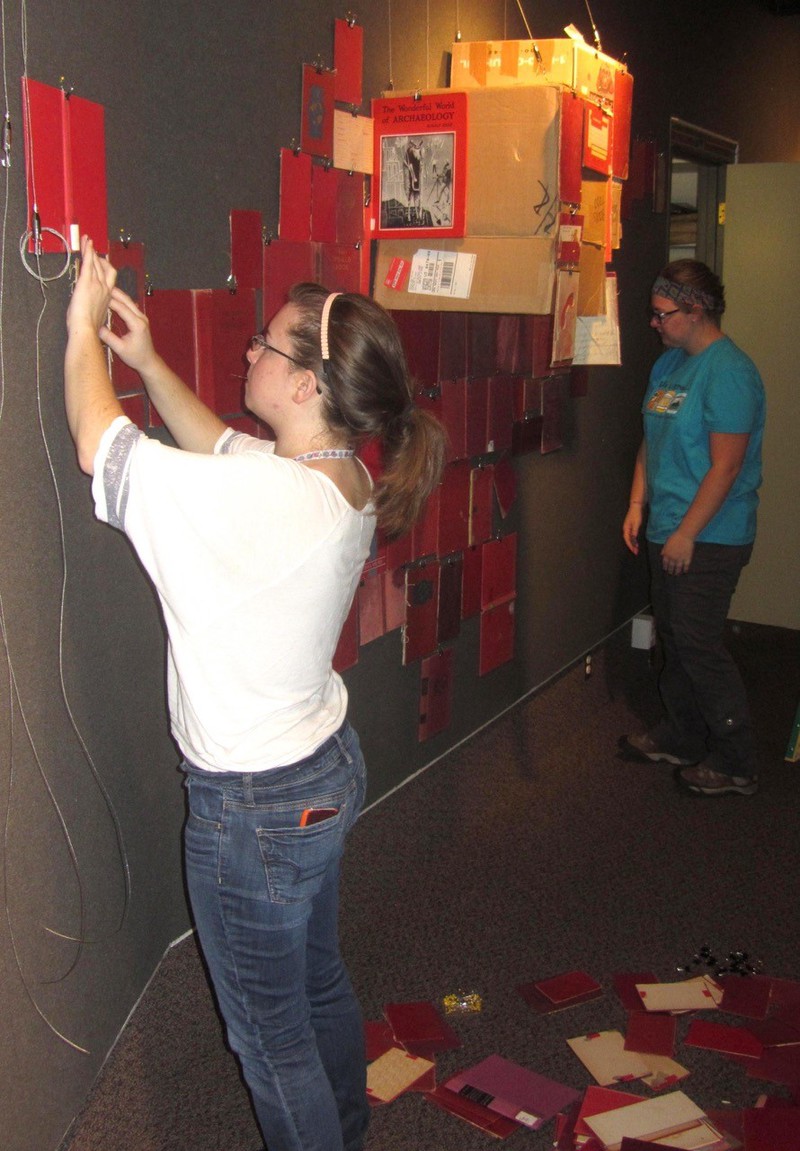Books transformed to art in M-Hall

CHADRON – Bibliophiles and librarians beware: art work on display at Chadron State College through Nov. 13 doesn’t treat books gently.
But tearing old books apart and placing pages and covers in undulating shapes on the walls of the main gallery of Memorial Hall should be viewed as an act of renewal, not destruction, according to artist Todd Christensen.
“I’m buying books that have been discarded; things people are selling for a quarter at a flea market or yard sale,” Christensen said Wednesday morning as he and several CSC students mounted the unique art installation. “I’m reusing (the book) and giving it a different life. It’s already lived its life as a book.”
Christensen’s show will be on display from Oct. 15 through Nov. 13. It is free and open to the public from 9 a.m. to 4:30 p.m. weekdays. A reception for Christensen will be Thursday from 2:30 p.m. to 4:30 p.m. in the Memorial Hall lobby.
An art professor and department chair at New Mexico Highlands University in Las Vegas, New Mexico, Christensen said he has been creating similar installations from books for about 11 years. Using books reflects in part his family background.
“A lot of these are old text books repurposed,” he said. “I come from a long family of educators. Education is a huge part of my life.”
His first book installations were carefully laid out, in straight lines at a precise distance from the floor, said Christensen.
“This one is different; much looser and free form,” he said. “I’m much more interested in creating this rhythm that’s happening in this show, and the organic shapes.”
Decisions about color and form are part of creating the work, which incorporates front and back covers and single pages-some with text or drawings added by previous owners or by Christensen himself.
“When I’m making the pieces I’m looking at the color combinations and how the colors are working together,” he said.
The use of cardboard boxes to mount some of the books is a recent innovation that gives the work a third dimension, Christensen said. And the writing or drawings scribbled in the books over years of use add to the piece, he said.
“Sometimes that handwriting that people have added is really interesting.”
The participation of CSC students and staff in the two-day long installation process enhances the free-form nature of the art.
“That is fun because they can make some of those decisions about what colors look good next to each other and what shapes,” Christensen said.
Learning about Christensen’s artistic process and vision is interesting, said CSC senior museum studies major Jessamyn Kostman, of Ogallala, Nebraska, who worked on the installation.
“Being able to help with it and help make something cool, it’s fun,” she said.
Christensen’s interaction with students also included presentations to some classes. Use your own interests as creative springboards, he told a students in a graphics art class.
“Whatever it is that motivates you, figure that out,” he said. “If it’s social media, Twitter or Facebook, use that to inspire you to create something out of it.”
Christensen’s show is the first art installation, a work which incorporate the entire gallery space as one piece in contrast to a series of individual works, at CSC in almost seven years, said art professor Laura Bentz, chair of the Department of Visual and Performing Arts.
“It’s not really a traditional way to handle a show. It’s a thought-provoking way,” she said.
Viewers can find different things in the installation, according to Christensen, who said his work is in part auto-biographical and also about “creating pathways” and social communication.
But the work can be enjoyed on many levels, including simply for the individual images of the book parts and pieces, he said.
“I’m happy if they just see a piece they like,” he said. “I try to make it visually appealing so that people can appreciate the colors and shapes and images, as well as people trying to get deeper into thinking about some of the symbolism.”
Category: Art, Campus News




